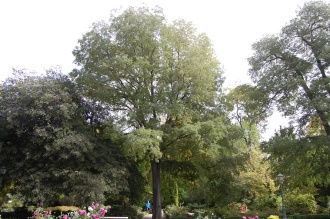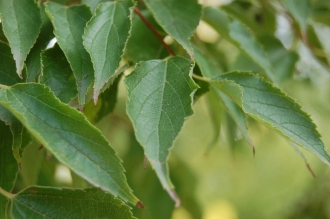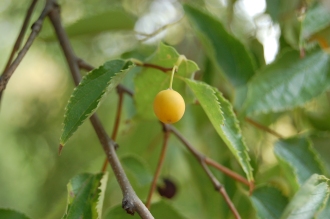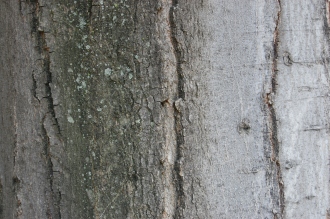Position: Full sun to partial shade
Flowering period: Spring
Soil: Moist, well drained
Eventual Height: 15m
Eventual Spread: 10m
Hardiness: 6b, 7a, 7b, 8a, 8b, 9a, 9b
Family: Cannabaceae
Celtis australis is a deciduous tree with a rounded habit. Its dark green leaves are ovate to ovate-lancelate with serrate margins, up to 13cm long and 7cm broad. In autumn its leaves turn pale yellow before they fall. Its grey bark is smooth with occasional fissures. Its green flowers are hermaphrodite, appear singularly or in clusters and wind pollinated. Its fruit are a globose drupe which are initially yellow, maturing to purple/ black, up to 1cm across and appear in autumn.
Celtis australis, commonly known as the European Nettle Tree, Mediterranean Hackberry, Lote Tree or Honeyberry, is native to south Europe, North Africa and Asia Minor. In its native habitat it grows in woodlands. The fruit of this tree are edible.
The etymological root of the binomial name Celtis is from the ancient Greek meaning ‘a tree with sweet fruit’. Australis is derived from the Latin meaning’ from the Australian continent’, which is slightly confusing (reader feedback welcome).
The landscape architect may find Celtis australis useful as an attractive medium sized tree with attractive autumn colour. Once established this tree is drought tolerant. It is tolerant of urban pollution.
Ecologically, Celtis australis berries are attractive to birds and mammals.
Celtis australis prefers moist, deep, fertile, well-drained soils. It tolerates most pH of soil. It will tolerate poor soils.









Australis in latin means Southern.Terra australis was the name of australia meaning Southern Land.Celtis australis is mostly a mediterranean tree,a southern tree for europe.
Dimitris, thank you for clarification.